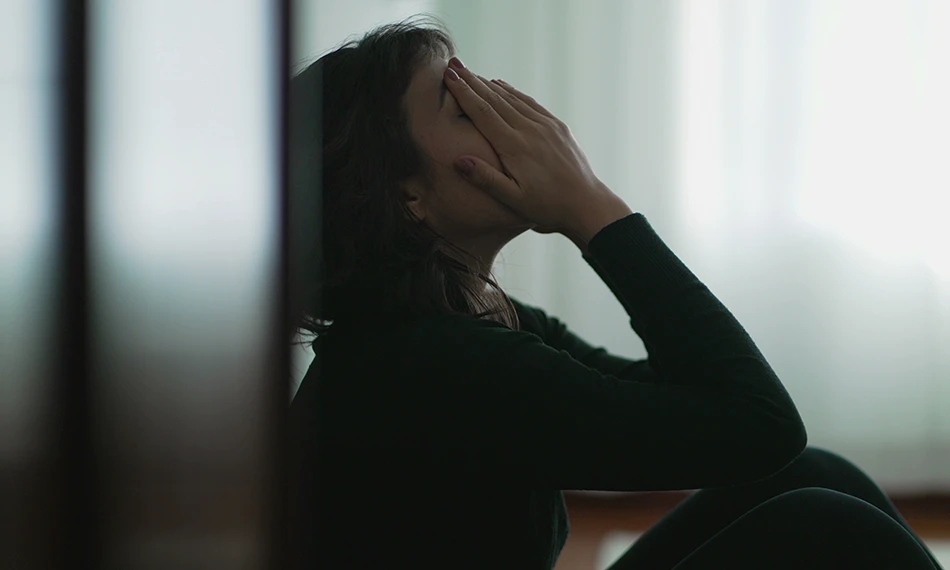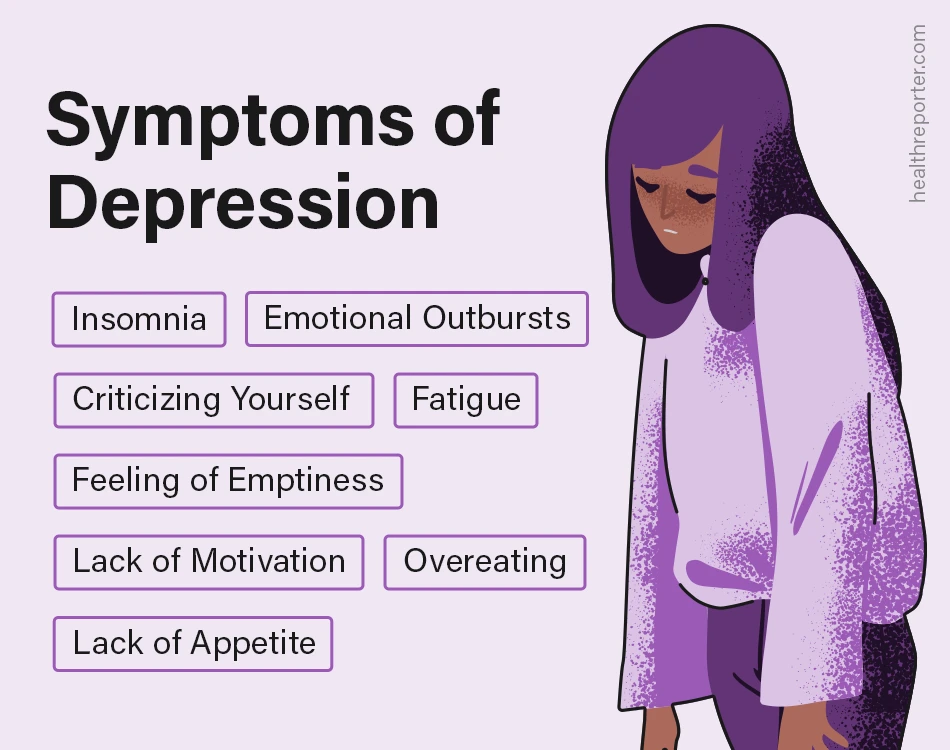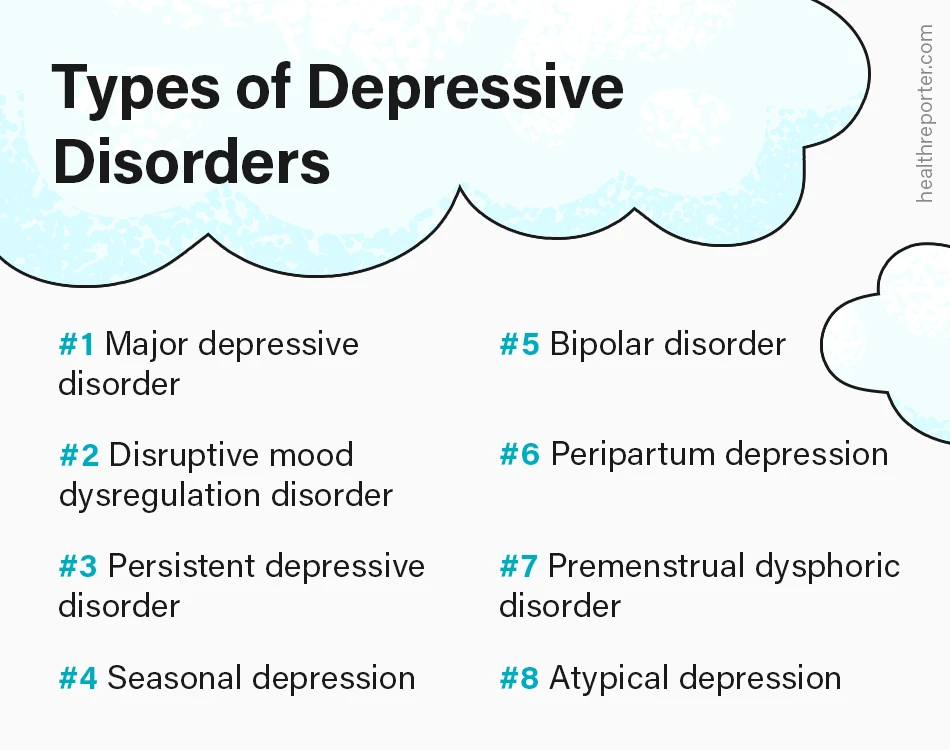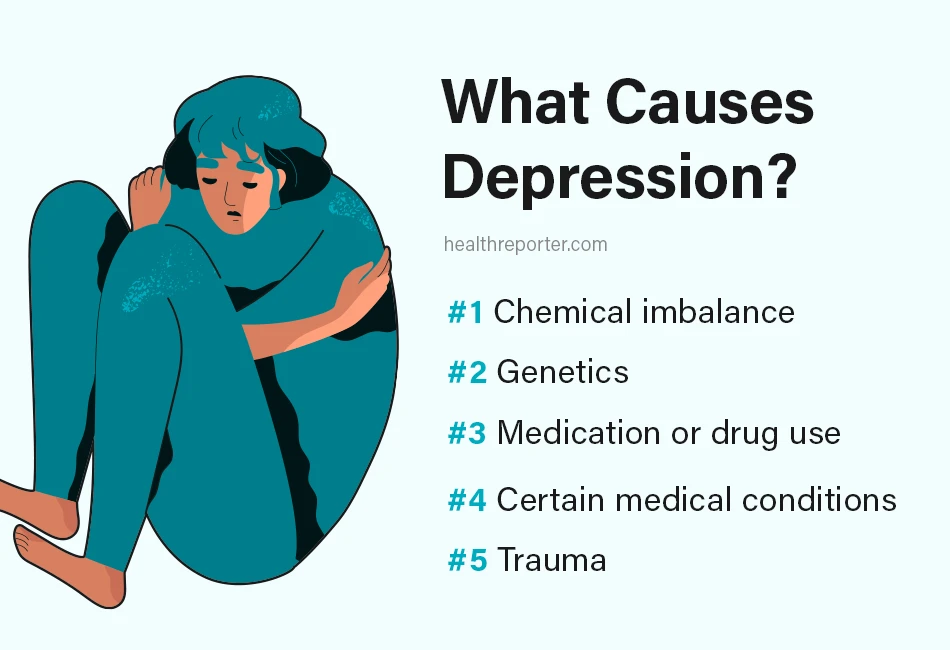Depression Explained: Symptoms, Causes, and Treatment
A team of experts is shedding light on depression’s impact and the path to recovery.

Sadness is a natural emotion that we all experience from time to time. It can be in response to losing a loved one, feeling isolated, or being faced with unexpected and difficult circumstances in life.
But depression is different. It’s not just feeling down in the dumps for a little while. It’s a deep sense of hopelessness, and when not treated properly, depression can start to make everyday tasks feel impossible.
Join us as we explore the complexities of depression and provide valuable insights into the different types of this mental illness and the best options for treatment.
What Is Depression?
Depression is a health disorder that is characterized by consistent feelings of sadness and hopelessness and a loss of interest in activities that you once found enjoyable.
It goes beyond the usual ups and downs of emotions we experience in our day-to-day life and can significantly impact a person’s daily life, relationships, and overall well-being.
Symptoms of Depression

While the symptoms of sadness and major depressive disorder do share similarities, there are some key differences that can help you differentiate the two.
Experiencing sadness after a loss or in reaction to negative circumstances in your life is completely normal.
However, experiencing some of the depression symptoms outlined below for several weeks or months can be an indication that you’re being affected by clinical depression.
- Feelings of emptiness
- Loss of motivation and feeling hopeless about the future
- Lack of desire to do pleasurable activities such as having sex
- Ruminating on past failures and criticizing yourself for perceived mistakes
- Becoming frustrated or having emotional outbursts when dealing with minor inconveniences
- Unusual sleeping habits, such as insomnia or feeling too tired to get out of bed
- Weight loss or weight gain as a result of lack of appetite or overeating
- Feeling so tired it’s difficult to concentrate or complete even simple tasks
- Self-critical self-talk
- Recurrent suicidal thoughts
Remember, it’s normal to have bad days and to experience sadness. But if you are experiencing increasingly negative symptoms or having suicidal thoughts, it’s important to speak with a health professional who has experience treating depression.
Types of Depressive Disorders

Depression is a blanket term that many people point to as a cause for a variety of depressive symptoms. In reality, though, depression can manifest in many different ways, with a range of symptoms and causes, which we will explain in greater detail below:
#1 Major depressive disorder
Major depressive disorder (MDD) is the most common form of clinical depression. It is characterized by the presence of one or more major depressive episodes, in which you experience a minimum of 5 depression symptoms every day for at least two weeks.
#2 Disruptive mood dysregulation disorder
Disruptive mood dysregulation disorder (DMDD) is a condition that primarily affects children and adolescents. It is characterized by severe and recurrent outbursts and temperamental behavior that is inconsistent with a child’s age and development level. Adolescents dealing with DMDD are more likely to develop a mood disorder in adulthood.
#3 Persistent depressive disorder
Persistent depressive disorder (PDD), also known as dysthymia, is a chronic form of major depression that lasts for an extended period. Unlike major depressive disorder, which involves intense depressive episodes lasting weeks or months, PDD involves a generally depressed mood that lasts for most of the day, more days than not, for at least two years in adults or one year in children and adolescents.
#4 Seasonal depression
Seasonal depression, also known as seasonal affective disorder (SAD), is a type of depression that begins and ends at the same time every year, usually during the fall and winter. It is believed to be linked to reduced sunlight affecting serotonin levels and changes affecting circadian rhythms.
#5 Bipolar disorder
Bipolar disorder, which was formerly known as manic-depressive illness, is a condition characterized by extreme shifts in mood that can also affect energy and activity levels. People with bipolar disorder are known to experience periods of intense emotional highs, known as manic episodes, followed by periods of deep lows and intense depression.
#6 Peripartum depression
Peripartum depression, previously known as postpartum depression, is a form of depression that occurs after childbirth, affecting up to 15% of new mothers. It is caused by a rapid change in hormone levels post-birth, combined with the stress of caring for a newborn, and can affect a mother’s ability to function and care for herself and her baby.
#7 Premenstrual dysphoric disorder
Premenstrual dysphoric disorder (PMDD) is a severe form of premenstrual syndrome (PMS) that affects some women during their cycles. Women dealing with PMDD tend to experience severe emotional and physical symptoms the week or two before menstruation that improve shortly after the onset of menstruation.
#8 Atypical depression
Atypical depression is a type of depression that has distinct symptoms compared to typical depression, though it often co-exists with other depression types or mental health conditions. Unlike traditional depression, people dealing with atypical depression often experience short bursts of happiness in response to positive events in their life, which is different from the usual constant depressed moods that accompany typical clinical depression.
What Causes Depression?

Depression is a complex condition that can be affected by a variety of both internal and external factors. That being said, the following factors have been shown to impact a person’s likelihood of experiencing depression at some point in their lives:
#1 Chemical imbalance
Neurotransmitters are chemicals that transmit signals between brain cells, and they play an essential role in regulating mood and emotions.
In the case of depression, it is believed that improper functioning of certain neurotransmitters, which results in lower-than-normal levels of serotonin, norepinephrine, and dopamine, may contribute to poor mental health symptoms, though nootropics are a supplement that is showing promise in boosting levels of these essential chemicals.
#2 Genetics
Genes play a role in influencing the medical predisposition of each individual, and studies show that adults whose parents suffer from depression are 2–3 times more likely to develop major depression.
However, it’s important to note that these genetic factors are not deterministic, meaning having a genetic predisposition does not guarantee that a person will develop depression.
#3 Medication or drug use
Substance abuse, including the use of alcohol and drugs, can have negative effects on depression.
In some cases, people turn to substances as a way to cope with their depressive symptoms. However, substance abuse can not only increase the symptoms of depression but also interfere with treatment.
#4 Certain medical conditions
Hormone imbalances and fluctuations caused by medical conditions like polycystic ovary syndrome (PCOS) are known to cause perinatal depression and premenstrual dysphoric disorder.
Post-menopausal women, meaning women between ages 45–54, also have one of the highest suicide rates as they struggle to deal with declining levels of estrogen and progesterone.
Chronic pain and medical conditions, and the emotional and psychological distress they cause, have also been shown to contribute to the development of depression and the worsening of symptoms.
#5 Trauma
Individuals who have experienced trauma may be at a higher risk of developing depression later in life.
Trauma has been shown to trigger the expression of certain genes that negatively affect mental health. Individuals who deal with intense trauma may also suffer from post-traumatic stress disorder (PTSD), with studies showing that up to 50% of people with PTSD also suffer from a major depressive disorder.
How Is Depression Treated?
If you’re dealing with depression, it can be hard to see the light at the end of the tunnel. Luckily, new research is coming out every day, and there are many proven treatment options you can use to improve your symptoms.
Medication
Antidepressant medication is one of the most common forms of treatment for major depression.
A group of drugs called SSRIs, which include popular drugs like fluoxetine (Prozac), escitalopram (Cipralex,) and sertraline (Zoloft), are usually the first choice and can be prescribed by a licensed professional in person or in live sessions through apps like TalkSpace.
Psychotherapy
Also known as talk therapy, psychotherapy is another popular option for treating a variety of mental disorders, including depression.
It involves sitting down with a health professional, either in person or online via popular mental health apps, to discuss troubling thoughts and behaviors in an attempt to identify and then change them.
Brain stimulation therapy
Popular forms of brain stimulation therapy include electroconvulsive therapy (ETC), eye movement desensitization therapy (EMDR), and transcranial magnetic stimulation (TMS).
These kinds of therapies are designed to stimulate sites in the brain through electrical currents or magnetic fields in order to alter the chemistry of the brain.
Self-Help for Depression: What Are the Options?
In addition to the previous treatment options, there are a number of holistic lifestyle changes that you can adopt in order to improve your depression symptoms, such as setting daily routines and getting into the habit of journaling. Here are a few more you can start with:
#1 Get quality sleep
Many people who experience depression also undergo changes to their sleep cycle, experiencing things like insomnia, a sleep disorder that leads to a higher risk for depression.
Breaking the pattern of poor sleep can be difficult, especially if you are already experiencing depression symptoms.
But using holistic sleep aids such as melatonin, meditating to lower stress levels, and limiting screen time before bed can help you get your much-needed 8+ hours per night.
#2 Eat wholesome foods
Studies have shown a direct link between the gut microbiome (the balance of healthy bacteria in your gut) and depression. Not only that, but certain nutritional deficiencies, such as low levels of omega-3 fatty acids and B vitamins, are common among those suffering from mental disorders.
Eating a well-balanced diet, full of healthy fats like fish, avocados, and nuts, and nutrient-dense foods like fruits and vegetables, is one way you can prevent negative mental health symptoms.
#3 Exercise
Getting your body moving is another proven method for reducing depression, with studies showing that as little as 30 minutes on the treadmill for 10 consecutive days can produce a significant reduction in the symptoms of depression.
If you’re experiencing severe depression and notice that these home remedies aren’t helping to alleviate your symptoms, don’t hesitate to get in touch with a mental health professional.
When Should You See a Doctor for Depression?
Knowing when to seek medical help when dealing with depression can be difficult, but if your symptoms are beginning to interfere with your life, it might be time to call in backup.
Most healthcare professionals recommend seeking medical advice if you have been experiencing a persistent feeling of sadness, emptiness, or hopelessness for almost the entire day every day for a minimum of two weeks or are experiencing suicidal thoughts and ideation.
Psychologists are trained in identifying the symptoms of depression and can get you set up with a treatment plan that works for you.
A Word From an MD
Everyone experiences sadness at some point in their life. Sadness is a normal and temporary response to things such as a loss, disappointment, or dealing with difficult circumstances in life.
Experiencing grief is a natural part of being human and generally subsides as we process our big emotions, allowing us to eventually return to our normal happiness levels.
Depression, on the other hand, is much more pervasive, with symptoms such as hopelessness and emptiness being experienced almost all the time.
Unlike sadness, which is spurred by a specific event, the onset of depression can feel more random, making it difficult to identify the triggers in order to make the necessary changes to overcome it. For this reason, working with a mental health professional is often needed to overcome depression.
FAQs
If you’re experiencing symptoms of depression, you may feel a significant decrease in energy that no amount of sleep can fix, a loss of motivation, persistent feelings of emptiness, and changes to your sleep schedule and appetite.
Yes, depression is a common mood/mental disorder that affects up to 17.3 million American adults every year, with women being affected more often than men.
While not everyone experiences physical symptoms from depression, some common physiological symptoms include feeling persistently tired and low energy, body aches and headaches, digestive issues such as constipation or diarrhea, and weight loss or gain depending on how it affects an individual’s appetite.
Conclusion
Depression is a complex mental health condition that affects millions of people worldwide.
It is more than just a sad feeling and involves persistent feelings of hopelessness and a loss of interest in once-enjoyable activities. For this reason, it can deeply impact a person’s daily life and overall well-being.
There are many different kinds of depression, and speaking with a mental health professional can be helpful in receiving an accurate diagnosis and creating an appropriate treatment plan.
Many treatment options exist currently, including activities you can do from home. But receiving professional treatment – either in the form of talk therapy or antidepressant medications, is often a necessary part of treatment.
With the right support, treatment, and self-care, individuals with depression can find hope, regain their lust for life, and get back to feeling their best.

















































 Select your language:
Select your language: 








